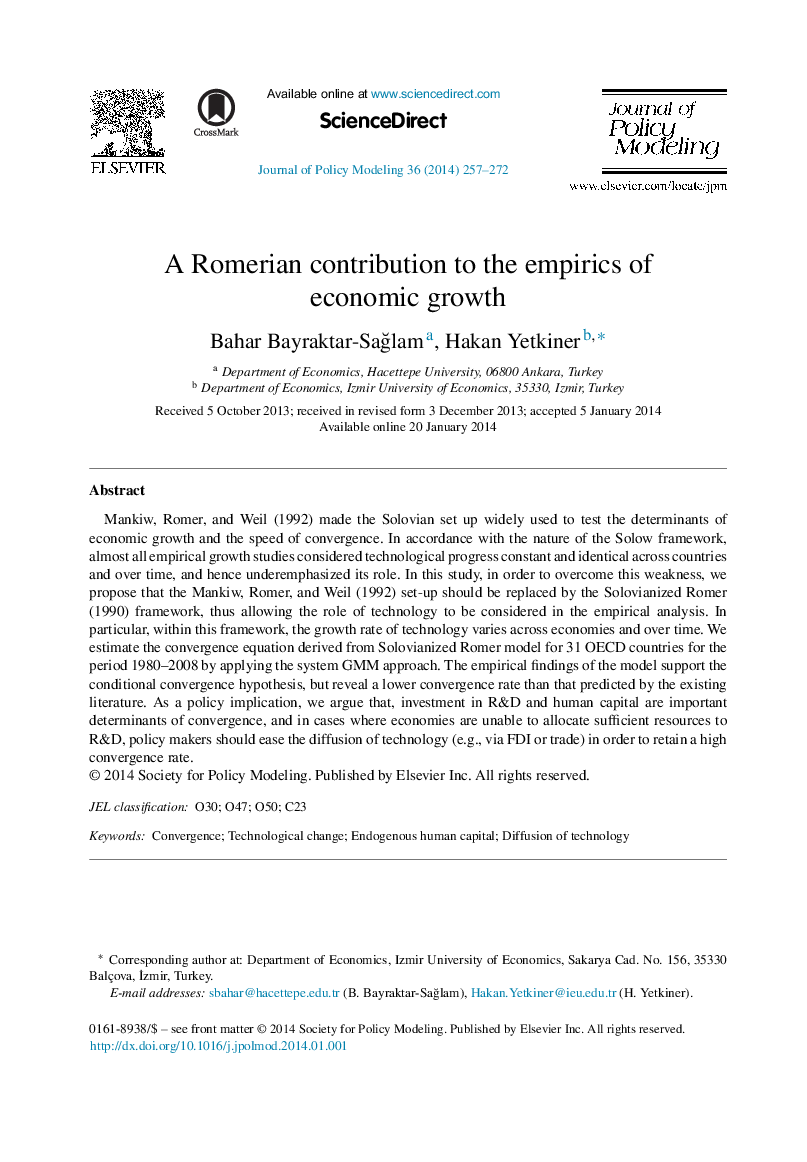| کد مقاله | کد نشریه | سال انتشار | مقاله انگلیسی | نسخه تمام متن |
|---|---|---|---|---|
| 10478935 | 931449 | 2014 | 16 صفحه PDF | دانلود رایگان |
عنوان انگلیسی مقاله ISI
A Romerian contribution to the empirics of economic growth
ترجمه فارسی عنوان
کمک رومینیایی به تجربیات رشد اقتصادی
دانلود مقاله + سفارش ترجمه
دانلود مقاله ISI انگلیسی
رایگان برای ایرانیان
کلمات کلیدی
موضوعات مرتبط
علوم انسانی و اجتماعی
اقتصاد، اقتصادسنجی و امور مالی
اقتصاد و اقتصادسنجی
چکیده انگلیسی
Mankiw, Romer, and Weil (1992) made the Solovian set up widely used to test the determinants of economic growth and the speed of convergence. In accordance with the nature of the Solow framework, almost all empirical growth studies considered technological progress constant and identical across countries and over time, and hence underemphasized its role. In this study, in order to overcome this weakness, we propose that the Mankiw, Romer, and Weil (1992) set-up should be replaced by the Solovianized Romer (1990) framework, thus allowing the role of technology to be considered in the empirical analysis. In particular, within this framework, the growth rate of technology varies across economies and over time. We estimate the convergence equation derived from Solovianized Romer model for 31 OECD countries for the period 1980-2008 by applying the system GMM approach. The empirical findings of the model support the conditional convergence hypothesis, but reveal a lower convergence rate than that predicted by the existing literature. As a policy implication, we argue that, investment in R&D and human capital are important determinants of convergence, and in cases where economies are unable to allocate sufficient resources to R&D, policy makers should ease the diffusion of technology (e.g., via FDI or trade) in order to retain a high convergence rate.
ناشر
Database: Elsevier - ScienceDirect (ساینس دایرکت)
Journal: Journal of Policy Modeling - Volume 36, Issue 2, MarchâApril 2014, Pages 257-272
Journal: Journal of Policy Modeling - Volume 36, Issue 2, MarchâApril 2014, Pages 257-272
نویسندگان
Bahar Bayraktar-SaÄlam, Hakan Yetkiner,
